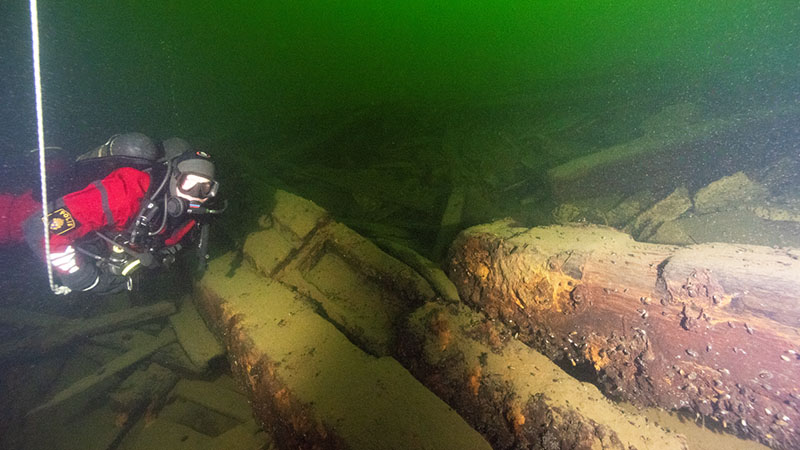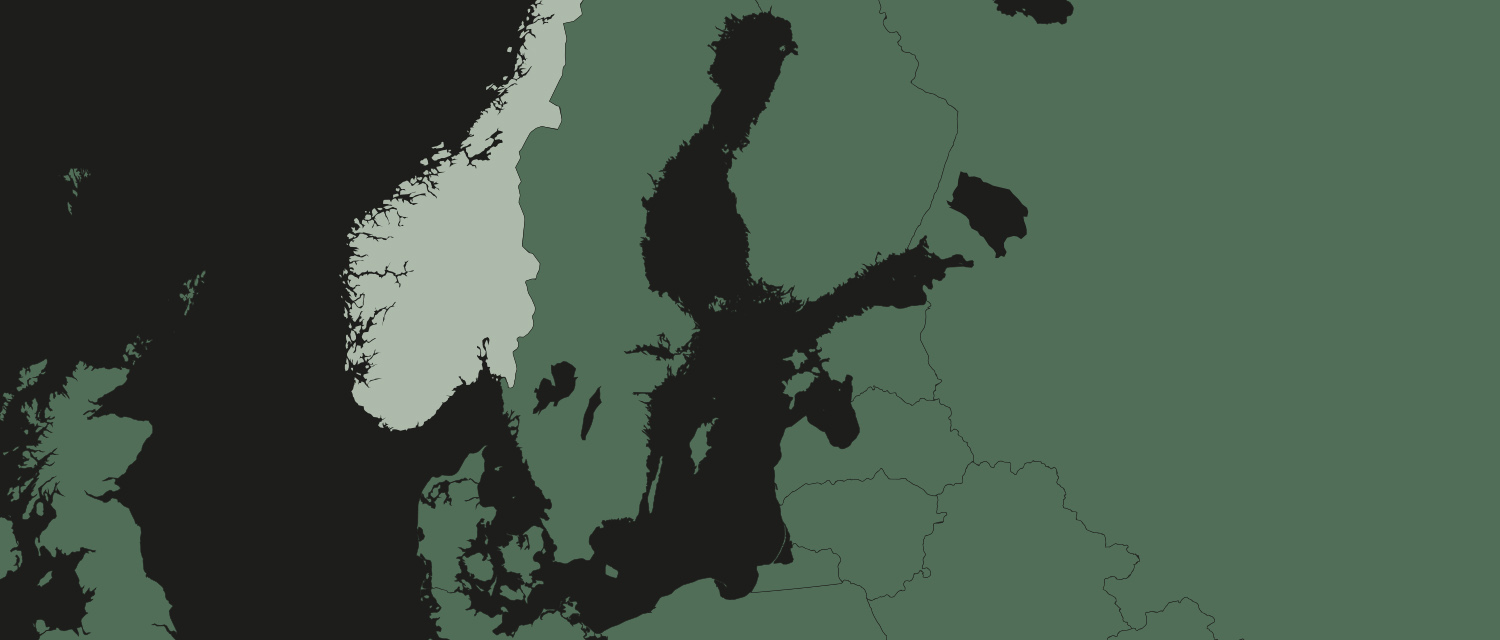The wreck at Franska Stenarna had been known by recreational divers since the 1960s. They had found and dived on the wreck but had not done any further research into its identity. When the wreck also became known to the authorities, it was decided that a proper investigation of the wreck site would be carried out in the autumn of 1994.
An English diving vessel loaded with diving gear, together with a group of English maritime archaeologists, met up with Swedish colleagues at Stavsnäs to establish the wreck site. Most of the shipwreck remains lie on a rocky ledge at a depth of about 30–40 metres. Below the ledge, at a depth of almost 60 metres, are fallen parts from the wreck, including a nearly intact rudder complete with tiller.
The ship, estimated to have been about 30 m long, likely had at least two masts. Based on the shipbuilding technique that can be discerned from the wreck remains and with the help of uncovered objects, including breech-loading cannons, the wreck can be dated to the early 1500s – a period considered to be a turning point in shipbuilding development, making the find at Franska Stenarna a thrilling one.
The wreck is probably the remains of the ship that one of Gustav Vasa’s privateer captains, Clements Rentzel, describes as “His Majesty’s best shipwreck”, which sank in 1525 somewhere between Dalarö and Djurhamn to a depth of roughly 40 metres. The ship is said to have been carrying guns and ammunition salvaged from the stranded Lybska Svan, stranded the previous year at Öland.
That same year the wreck was discovered, the Armed Forces Museum in Oslo got an offer to buy two bronze cannons for a large sum of money. When the cannons were able to be linked to the diving team that found the wreck at Franska Stenarna, the incident was reported to the police. The cannons, which are contemporary with the wreck, are today part of the collections of the National Maritime and Transport Museums.


